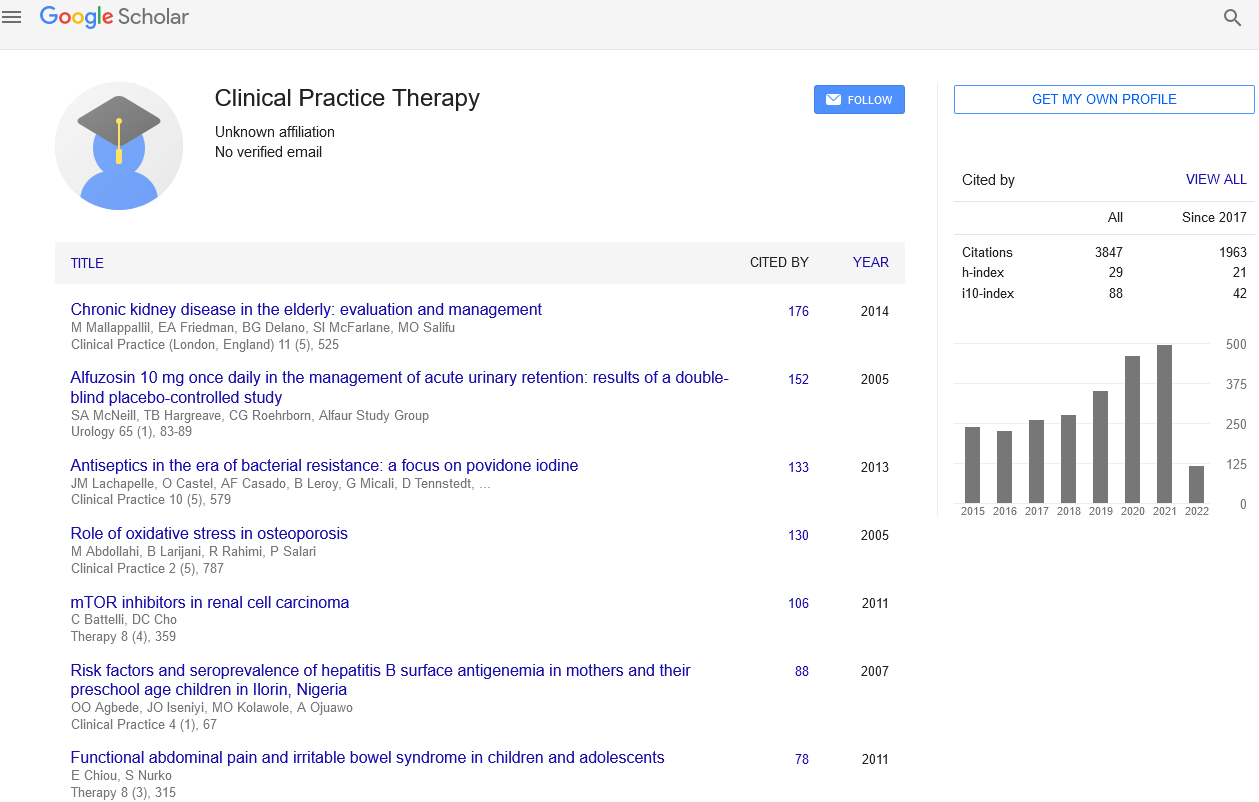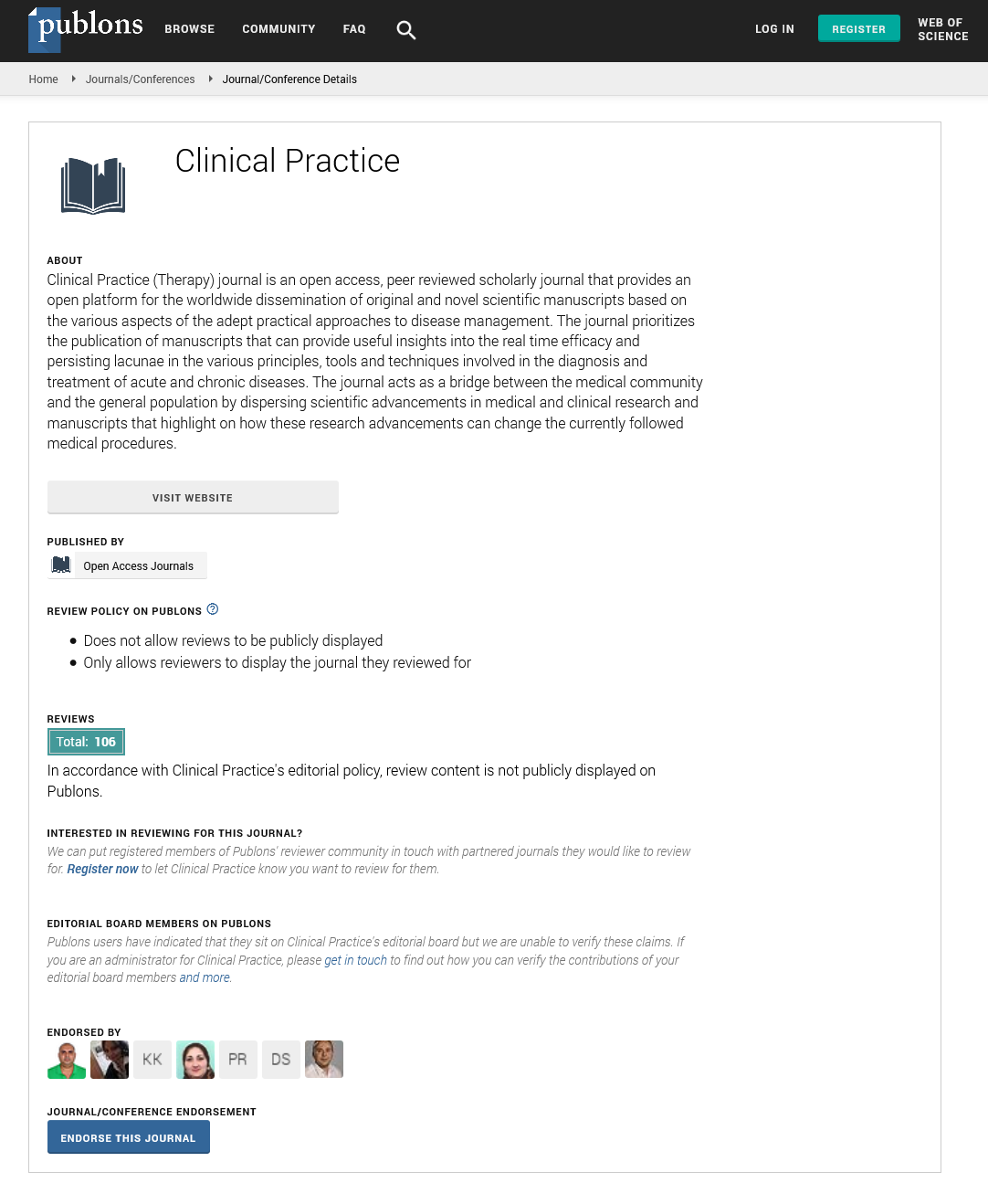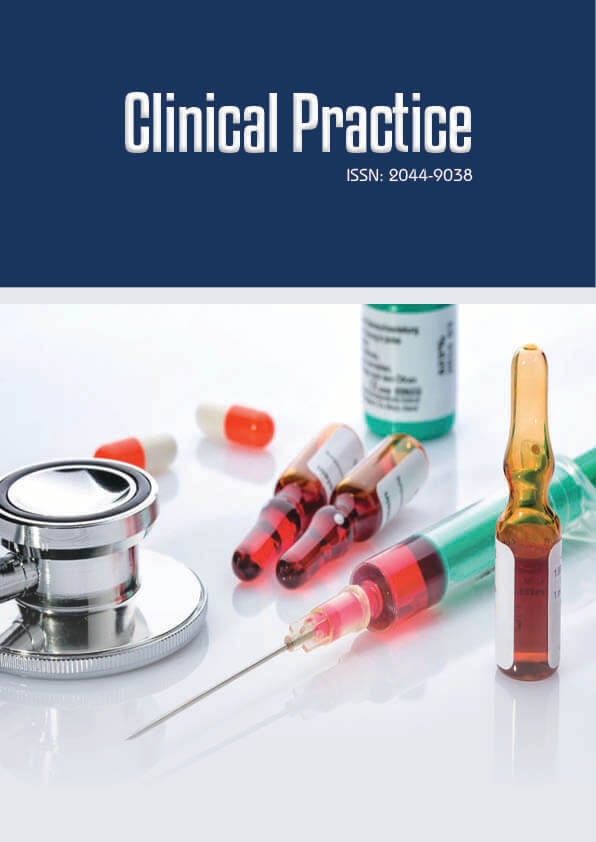Opinion Article - Clinical Practice (2025) Volume 22, Issue 1
Current developments and opportunities for quick point-of-care next-generation CRISPR-based diagnostics
Haim Edde D*
ENT department, Military Hospital of Nouakchott, Mauritania
- *Corresponding Author:
- Haim Edde D
ENT department, Military Hospital of Nouakchott, Mauritania
E-mail: haim@yahoo.com
Received: 01-Mar-2025, Manuscript No. fmcp- 25-159064; Editor assigned: 03-Mar-2025, Pre-QC No. fmcp-25-159064 (PQ); Reviewed: 17-Mar-2025, QC No. fmcp-25-159064; Revised: 21-Mar-2025, Manuscript No. fmcp- 25-159064 (R); Published: 28-Mar-2025, DOI: 10.37532/2044-9038.2025.22(1).1-3
Abstract
The advent of CRISPR technology has revolutionized molecular diagnostics, paving the way for rapid, accurate, and affordable point-of-care (POC) testing. Leveraging the precision of CRISPR-associated proteins, these diagnostics promise to address limitations in traditional methods, such as prolonged turnaround times and laboratory dependency. This article explores recent advancements in CRISPR-based POC diagnostics, highlighting their potential for detecting infectious diseases, genetic disorders, and cancer biomarkers. Additionally, we discuss challenges such as scalability, affordability, and regulatory hurdles while envisioning the future of CRISPR diagnostics in improving global healthcare outcomes.
Keywords
CRISPR diagnostics • Point-of-care testing • Molecular diagnostics • Rapid detection • Healthcare innovation
Introduction
Point-of-care (POC) diagnostics play a critical role in improving healthcare accessibility and outcomes, especially in resource-limited settings. Traditional diagnostic methods often require specialized equipment and extended waiting times, which can delay critical interventions. CRISPR (Clustered Regularly Interspaced Short Palindromic Repeats) technology, initially recognized for its genome-editing capabilities, has emerged as a game-changing tool in diagnostics. With its specificity and programmability, CRISPR-based assays are now being developed to deliver fast and accurate results for various diseases directly at the POC [1].
Advancements in CRISPR-based diagnostics
Recent advancements in CRISPR-based diagnostics have centered on the use of Cas proteins (e.g., Cas12, Cas13) to identify target nucleic acids with remarkable precision. The SHERLOCK (Specific High-sensitivity Enzymatic Reporter Unlocking) and DETECTR (DNA Endonuclease Targeted CRISPR Trans Reporter) platforms have set the foundation for deploying CRISPR technology in POC settings. These methods integrate isothermal amplification techniques to enhance sensitivity while maintaining simplicity [2].
For example, CRISPR-based diagnostic kits for SARS-CoV-2 detection demonstrated their potential during the COVID-19 pandemic, delivering results within 30 minutes. Similarly, ongoing efforts are aimed at creating multiplexed assays for simultaneous detection of multiple pathogens, genetic mutations, or biomarkers, thus broadening the scope of CRISPR diagnostics [3].
Challenges and limitations
Despite significant progress, CRISPR-based diagnostics face challenges such as cost-effectiveness, stability in varied environmental conditions, and ease of use for non-specialist users. Scalability and regulatory approval processes further hinder widespread adoption. Addressing these issues is essential to translate laboratory innovations into practical solutions for real-world healthcare settings [4].
Future prospects
The future of CRISPR diagnostics lies in developing portable, user-friendly, and highly sensitive devices capable of delivering results within minutes. Integrating CRISPR with advanced technologies such as microfluidics and smartphone-based readouts could revolutionize POC testing, making diagnostics more accessible and equitable globally [5]. Furthermore, efforts to lower production costs and streamline regulatory pathways will be critical for ensuring broad adoption [6].
Conclusion
CRISPR-based diagnostics have immense potential to transform POC testing, offering rapid, accurate, and affordable solutions to critical healthcare challenges. By addressing existing limitations and leveraging ongoing advancements, these next-generation diagnostics are poised to play a pivotal role in global health innovation.
References
- Sopik V, Foulkes WD (2016) Risky business: getting a grip on BRIP. J Med Genet 53: 296â297.
- Shariff MIF, Cox IJ, Gomaa AI, Khan SA, Gedroyc W, et al. (2009) Hepatocellular carcinoma: current trends in worldwide epidemiology, risk factors, diagnosis and therapeutics. Expert Rev Gastroenterol Hepatol 3: 353-367.
- Poschl G, Seitz HK (2004) Alcohol and cancer. Alcohol Alcohol 39: 155-165.
- Merion RM, Schaubel DE, Dykstra DM, Freeman RB, Port FK, et al. (2005) The survival benefit of liver transplantation. Am J Transplant 5: 307-313.
- Kamath PS, Wiesner RH, Malinchoc M, Kremers W, Therneau TM, et al. (2001) A model to predict survival in patients with end-stage liver disease. Hepatology 33: 464-470.
- Biggins SW, Kim WR, Terrault NA, Saab S, Balan V, et al. (2006) Evidence-based incorporation of serum sodium concentration into MELD. Gastroenterology 130: 1652-1660.



